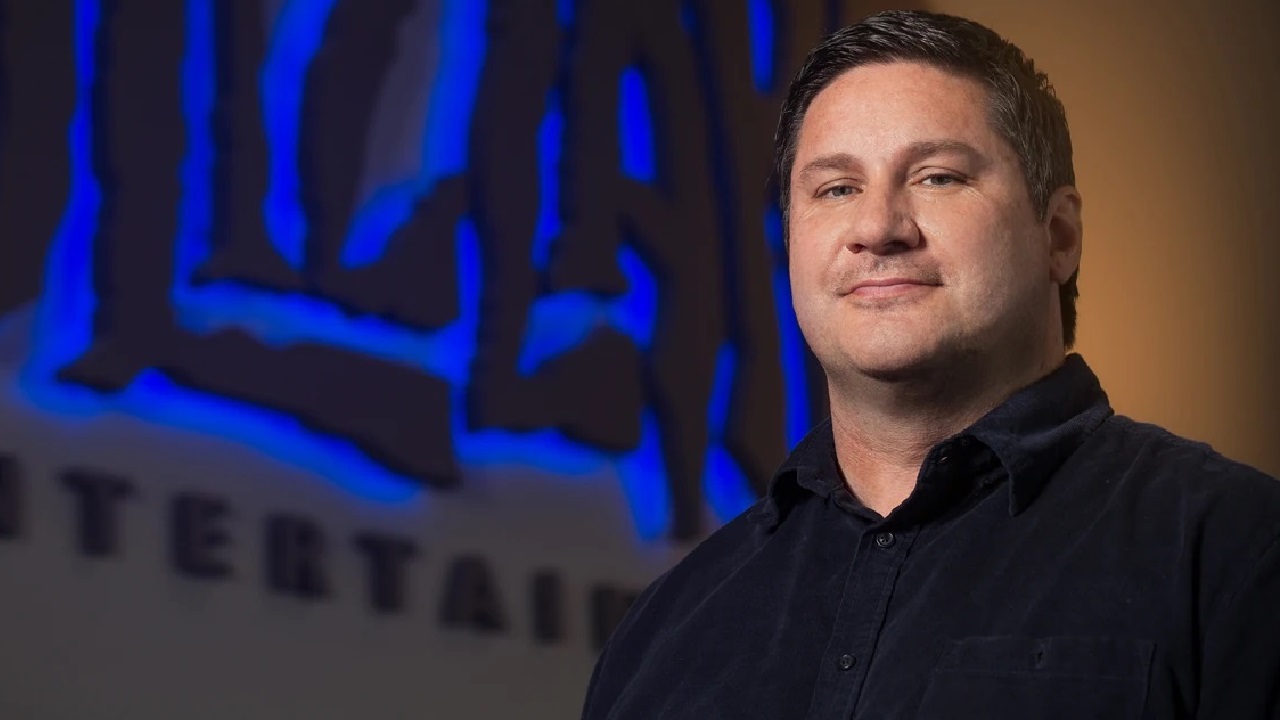Virtual reality has certainly experienced a rollercoaster of expectations in recent years. While the lofty dreams of an all-encompassing digital universe have yet to materialize fully, the Meta Quest 3 represents a recalibration of the metaverse vision proposed by Mark Zuckerberg. Instead of a dystopian portrayal akin to “Ready Player One,” it refers to the fundamentals: playful arm-waving, immersive gaming, and watching sports in VR. And honestly, that’s perfectly fine.
The Meta Quest 2 was hands-down the best VR headset on the market, which has seen a lot of growing competition since then. The headset, released in 2020, has started to feel a little dated as its once impressive Gen 1 Snapdragon XR2 was starting to feel like an ancient relic, especially against new fancier headsets. Heck, when we reviewed it, it was still called an Oculus Quest 2; that’s how old we are talking about.
The Meta Quest 3 is a massive upgrade from the Quest 2. It’s more powerful, its stunning 4K+ pancake lenses make games look phenomenal, it boasts excellent inside-out tracking, and it has a fairly idiot-proof setup. On top of that, it’s priced at only $500, making it one of the most affordable VR gaming headsets—or, I should say, “mixed reality headsets”—on the market.
The Quest 3 sports a 2064 x 2208 resolution per eye on pancake lenses, offers up to a 120Hz refresh rate and provides a FOV of 110 degrees. It’s powered by Qualcomm’s 2nd gen Snapdragon XR2 chip, giving it at least double the graphical performance of the Quest 2.
The passthrough cameras are vastly superior to those in earlier versions (even better than the Meta Quest Pro), offering a clearer and higher-quality image. It’s now much simpler to read text on a phone or monitor. A double tap on the headset’s side provides a detailed view of your surroundings.
The depth adjustment buttons inside the visor are a blessing for those who wear glasses. They allow for an expansion of the visor, ensuring that your glasses aren’t pressed against your face or the headset’s lenses.
(Image credit: Future)
Tracking: Wireless inside-out SLAM tracking
Lens tech: Dual LCD Pancake lens optical stack.
Resolution: 2064×2208
Refresh Rate: 72Hz, 80Hz, 90Hz, 120Hz (experimental)
FOV: 110°
IPD: 53–75mm
Audio: 3.5 mm audio jack
Weight: 515g
Price: $500 (128GB), $650 (512GB) | £480 (128GB), £620 (512GB) | €549.99 (128GB), €700 (512GB)
In terms of those lenses, the Quest 3 now employs pancake lenses, similar to those in the Quest Pro. These slimmer lenses afford the headset a more streamlined profile than the Quest 2, even if it’s roughly ten grams heavier. The weight distribution feels more balanced, making the headset more ergonomic. It’s a compact, well-crafted device that doesn’t strain your neck, even after prolonged use. I particularly noticed its comfort during virtual workouts; it never felt like my head was trapped, even after gaming for more than an hour.
At Meta Connect, there was a lot of talk about the headset’s other uses, like watching movies and sports and playing games. It’s nice that you could virtually sit courtside at a basketball game or sit on a work call at a virtual desk, but most folks are here for the VR games.
Meta gave me access to newer titles, such as the first-person rogue-like “Dungeons of Eternity” and the enhanced version of “Red Matter 2,” a sci-fi adventure. Both games would likely struggle running natively on the Quest 2. While the Qualcomm Snapdragon XR2 Gen 2 chip in the headset doesn’t compare to an RTX 40-series GPU, it’s sufficiently robust for many VR games.
Both these games look great, with in-game text being clear and legible due to the superior display resolution. One of the biggest problems with the Quest 2 was its lack of power, often resulting in games that looked fine but lacked sharp visuals. But here, it looks great, and the Quest 3 can handle large numbers of characters on screen that would have killed the frame rate on the older headset.
I explored some older Quest 2 games that “were enhanced for Quest 3,” like rhythm-based shooter Pistol Whip, a spooky sci-fi survival game, and Into the Radius. Both games benefited from the Quest 3’s hardware upgrade with notably better graphics, smoother frame rate, and significantly improved draw distances. I’d like to see what other Quest 2 titles will get the enhanced treatment over time. For now, it seems like just a handful.
(Image credit: Future)
(Image credit: Future)
(Image credit: Future)
(Image credit: Future)
(Image credit: Future)
(Image credit: Future)
The headset supports backward compatibility with all Quest 2 titles. I tried “Vader: Immortal” – because wielding a lightsaber in VR is undeniably a kick-ass experience. While there was no graphical improvement, the game loaded in quicker, and the headset could track my somewhat chaotic lightsaber form—flailing around like a toddler throwing a tantrum—very well. So, there are benefits to picking up older games on the newer hardware, too.
If you’re like me, though, most of your VR games reside in your Steam library. So, seeing that the Quest Link has returned for the Quest 3 is a welcome relief. Initially, I encountered challenges getting my Quest to communicate with my gaming PC. However, I suspect this was likely due to some pre-release issues. Now that’s resolved, running my Steam VR games on the Quest 3 wirelessly is seamless, with most games operating with minimal latency. Your old USB-C link cables should suffice if your Wi-Fi isn’t up to par. While Meta offers a new one for $80, more economical third-party alternatives are available.
The only annoyance with using SteamVR in this way is the occasional need to manually adjust the resolution of certain games to ensure compatibility with Meta’s headset. So if a game looks blurry or a little off, that should be the first thing you check out.
The new Quest 3 controllers have removed the prominent LED tracking ring. I initially had reservations about how this might impact tracking accuracy, but, to my relief, I encountered no issues. Even in games demanding more dynamic movements, such as the maraca-shaking dance game Samba De Amigo, the tracking is spot on. A single AA battery powers each controller, though Meta offers a charging dock for $130, which includes rechargeable batteries.
(Image credit: Future)
(Image credit: Future)
(Image credit: Future)



You can also use your hands instead of controllers if you prefer. While I love the idea of using simple hand gestures like finger swiping and tapping to navigate the menus, the Quest 3 sometimes struggles to differentiate between them.
You have a battery life of just under two hours for wireless play, which aligns with what Meta claims. It fully charges in a couple of hours, or if you play from a seated position and don’t mind, you can plug in a USB-C cable and play it while it’s charging. For non-gaming, I got two hours and 15 minutes of streaming video and watching sports.
The Quest headsets are a favorite among many VR gamers because of their ease of setup. They’re completely wireless, requiring no base stations or tethering to a PC. And the setup is all done through a smartphone app.
The headset can automatically set up a playspace by scanning the room in passthrough mode in addition to tracing the boundaries yourself. I tested this in multiple rooms of various sizes and furniture arrangements, and the Quest consistently did a fantastic job of outlining a safe play area each time. The headset can detect walls, desks, and corners with impressive accuracy, thanks to the depth sensor between the two RGB passthrough cameras at the front of the headset. The initial setup takes about 15 minutes, and then you’re ready to play. The headset remembers rooms it’s been in before, though you can manually draw new boundaries if you’re more comfortable.
This flexibility grants users more freedom in setting up new play spaces. I tried Lee Mills Bodycombat, which incorporates a range of mixed martial arts moves. However, I set it up on the deck outside to avoid accidentally uppercutting a wall.
(Image credit: Future)
(Image credit: Future)
(Image credit: Future)
One aspect of the Quest 3 I’m still skeptical about but still look forward to trying is mixed-reality gaming, where games overlay content on existing spaces like walls and desks. For instance, the upcoming Stranger Things game will open portals in your living room, but it feels more like a VR experience than an actual game.
The Quest 3 is available in 128GB and 512GB versions, priced at $500 and $650, respectively. If you’re someone like me, who has most of their VR games on Steam via Quest Link, the 128GB Quest 3 should offer ample storage unless you’re keen on recording extensive footage directly on the headset.
At $500, the Quest 3 hits the sweet spot for a VR headset; it’s a great value package, especially compared to some of the more expensive headsets we’ve recently reviewed. However, costs can accumulate if you plan to invest in accessories. I’ve mentioned the $80 link cable and $130 charging dock. New head straps can range between $50-$80, and a carrying case is priced at $70. Additionally, if you need magnetic prescription lenses for a glasses-free experience, that’s another added expense.
But as a simple VR package, the Quest 3 strikes an excellent balance between performance, comfort, and price. It’s a testament that the kitchen sink approach to designing a VR headset isn’t always necessary, especially for casual VR gamers. The Meta Quest 3 has yet to sell on the future of mixed reality it’s offering, but at least the games look good and play really well.











